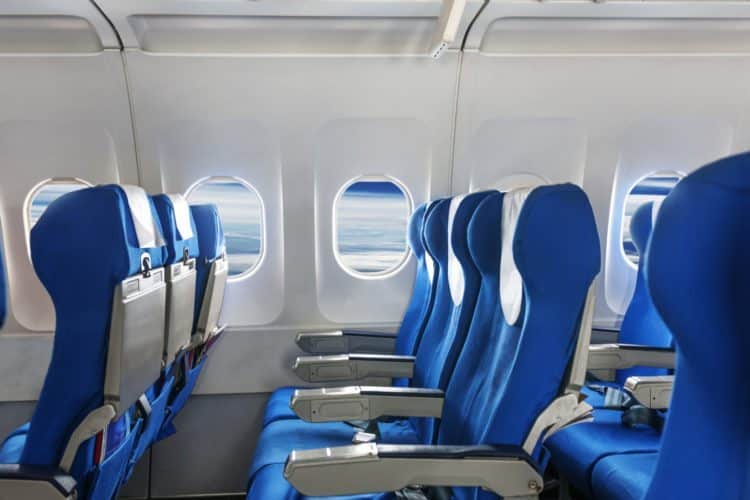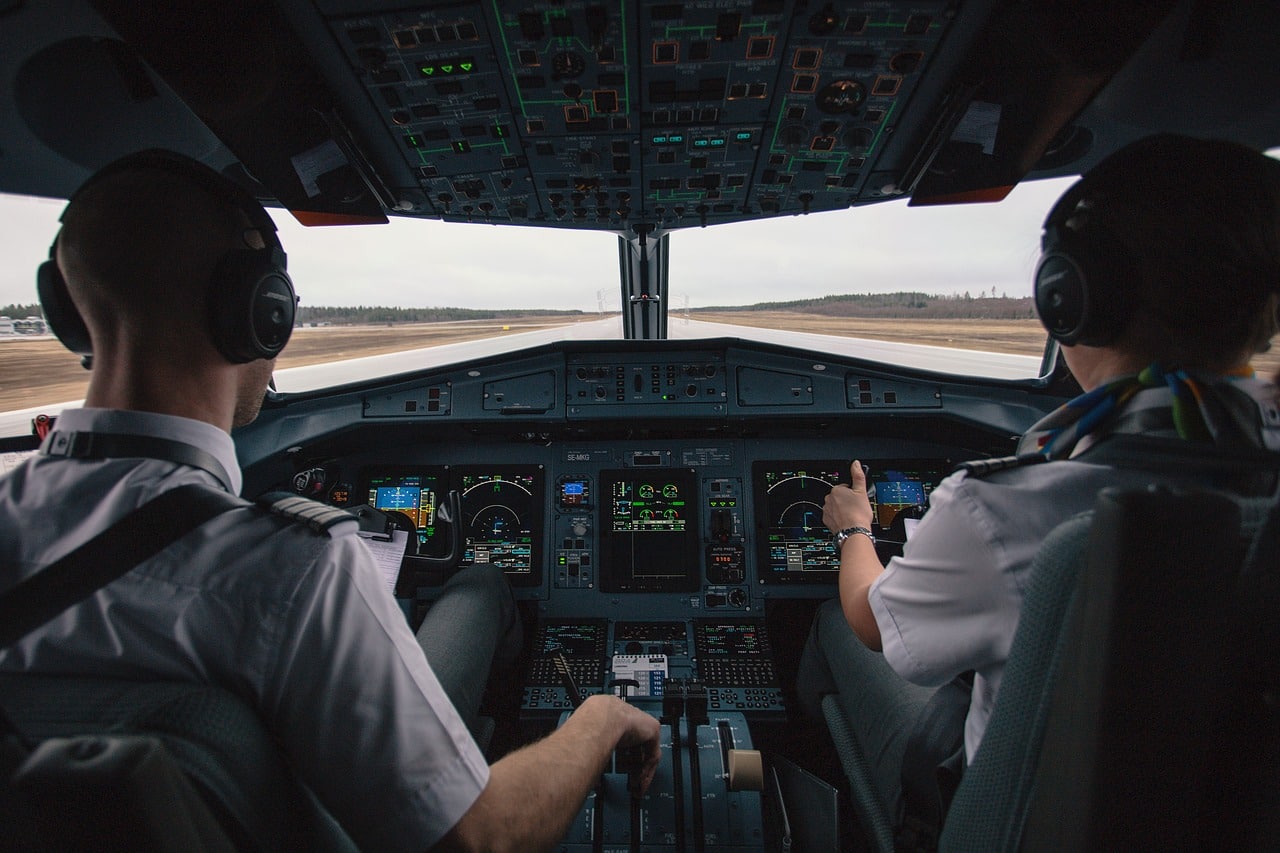Aerospace
How should I proceed if an aircraft is about to crash?
A few of the tips. If an aircraft is about to crash, how should I react?

One of the most terrifying things we can imagine in life is an aircraft crash. However, even if it does happen, we should be ready to survive the crash. Airlines are being more cautious about the safety of each and every passenger. Although they usually keep safety instructions and aircraft fitness up to date, such a problem shouldn’t arise; yet, a crash could still happen to owe to a technical or human error.
How to choose best airline seats(Opens in a new browser tab)
So let’s learn how to survive by preparing for it.
- Must adhere to flight regulations. If you are knowledgeable about emergency protocols and evacuations, that will be fantastic. you gain the power to escape.
- Don’t panic. most passengers, especially the elderly. But the reality is that your airline’s pilots have plenty of experience in the aircraft. due to the extensive simulation training, they have received for the various scenarios. and they are only authorized after passing all tests and exams, so they can handle there is also ATC ground support for aiding planes. Even if the plane disappears from radar, they will still be tracking you from the point of origin to the point of destination. If it can land, it has a good chance of surviving.
- You should remove your tie or scarf, loosen your belt, and empty your pockets of any sharp objects. Take off your high heels. Before landing, take off your glasses so they won’t fly away and are available in case you need them to see your way out. Sometimes, objects that are fixed to our environment could seriously hurt us.
- Back up as much as you can. To avoid slipping, fasten the seatbelt tightly and low across the hips (when a passenger slides forward under a loosely fitted seat belt). No twisting of the seatbelt is permitted. Place chin in the chest. To “fold up into a ball,” bend forward. Place your head against the front seat. put your hands on your head, Put your arms at your sides and grasp your legs (holding onto the lower legs may provide a more stable position).
- Find the nearest exit, then prepare your backup landing. Some exits are inaccessible from water landings. Count the rows to those exits and look for any protrusions that might help you locate them if the cabin is smoke-filled.
- In the event of a crash, all of the aircraft doors and emergency exit windows will need to be opened. The crew may assist with this operation, or you should be familiar with how to do it by looking at the flight instruction manuals.
- Have a moist piece of cloth on your hand to help you breathe if there is smoke. When evacuating, stay as low as you can if there is smoke.
- During the pre-landing briefing, the flight attendants will give you instructions. People will cooperate to rescue everyone if they are all on the same page and know what is expected of them. Don’t waste time using your camera to record video.
- Avoid pumping up your life jacket before a crash. If the airplane crashes into water, inflate your life jacket outdoors after exiting the plane If it does not inflate automatically with gas, blow air into it to cause it to inflate. You will become stranded on the ceiling and be unable to swim to the exit if you inflate it and the airplane fills with water. Get out of your life vest if this occurs so you can swim out and grab onto someone once you’re outside. Two persons can be buoyed by lifevests.
- Having said that, it is uncommon to receive much advance notice because the majority of catastrophic incidents are not predicted. In those circumstances, if you live, follow the flight crew’s instructions and leave nothing behind.
If you find it helpful, forward it to your friends and family.
Do they fill airplane tires with nitrogen?

Aerospace
Which is bigger 777x or 787 aircraft ?

The 777X is a new series of the Boeing 777 family and is designed to be larger and more efficient than its predecessor. It features two variants: the 777-8 and the 777-9, being the larger of the two.
The Boeing 777X emerges as the larger sibling within the Boeing family, representing a significant leap forward in both size and efficiency. Comprising two variants, the 777-8 and the 777-9, the latter takes the crown as the larger of the two. With its expansive fuselage and impressive wingspan, the 777X is tailored for long-range journeys and boasts a substantial passenger capacity.
On the other hand, the Boeing 787, affectionately known as the Dreamliner, occupies a niche in the market as a smaller yet formidable aircraft designed for medium to long-range flights. Its distinguishing feature lies in its composite fuselage, a technological marvel that renders it lighter and more fuel-efficient compared to conventional aluminum counterparts. The Boeing 777X is larger than the Boeing 787 aircraft.
When it comes to passenger capacity, the 777-9 reigns supreme, typically accommodating a sizeable contingent of 400-425 passengers in its standard configuration. In contrast, the 787, with its more modest dimensions, typically carries between 240-290 passengers, depending on the variant and layout.
One of the remarkable innovations introduced with the 777X is its folding wingtips, a feature designed to address the logistical challenges of accommodating such a large aircraft in conventional airport gates. These folding wingtips enable the 777X to retract its wings, allowing it to fit into gates designed for smaller aircraft while still reaping the benefits of an extended wingspan during flight, thereby enhancing fuel efficiency and operational flexibility
Aerospace
China Secures Production Certificate for Mass Production of Pilotless eVTOL Aircraft

The first passenger-carrying pilotless electric vertical takeoff and landing (eVTOL) aircraft in the world, the EH216-S, has received the Production Certificate for its eVTOL aircraft from the Civil Aviation Administration of China (CAAC).
This is a significant milestone for EHang Holdings Limited, the leading UAM technology platform company in the world. This outstanding accomplishment is another big step towards mass manufacturing for the eVTOL aircraft and the ensuing commercial operations, building on the ground-breaking acquisition of the Type Certificate and the Standard Airworthiness Certificate for the EH216-S.
The PC is a crucial certificate that the aircraft maker receives from the CAAC, the country’s aviation authority. By obtaining this certificate, EHang has demonstrated that it has set up a quality management system for mass production that satisfies the airworthiness regulation standards set forth by the CAAC, and the company has been given permission to continue producing mass quantities.
It is also a strong guarantee of the calibre of the goods made by EHang. Raw materials, supplier management, manufacturing organisation, production quality control, aircraft pre-delivery test, after-sales repair and maintenance, etc. are all included in the mass production quality management system for the EH216-S.
To ensure that every aircraft and its components that roll off the production line strictly adhere to the approved type design and safety requirements, the system sets clear guidelines and documentation for every step in the production procedure. This ensures comprehensive traceability and safety control.
Aerospace
Four Airbus A380 Superjumbos lined up to be scrapped

In a strategic move aimed at reclaiming valuable resources from the iconic Airbus A380 aircraft, VAS Aero Services and Dr. Peters Group have announced a significant collaboration.
This partnership marks a milestone in aviation logistics and aftermarket services, with four of these colossal planes slated for teardown and redistribution of used serviceable material (USM).
The venture between VAS Aero Services, renowned for its expertise in aircraft dismantlement, and Dr. Peters Group, a prominent Germany-based investment fund management firm, underscores a commitment to sustainable aviation practices. This isn’t their first foray into scrapping A380s; their successful partnership has already seen the dismantlement of these aircraft, making them pioneers in this niche.
Under the agreement, the latest consignment brings the tally to eight A380s entrusted to VAS by Dr. Peters Group. Managing Director Christian Mailly of Dr. Peters Group emphasized the trust placed in VAS, citing their unparalleled capabilities in dismantlement and aftermarket sales network. It’s a strategic move in response to the growing demand for quality USM parts, particularly with the resurgence in reliance on the A380.
Notably, the teardown process will be carried out at various locations, optimizing the positioning of harvested parts to cater to different markets. While some parts will be positioned in Europe to support operators in the region and the Middle East, others will remain in the Asia-Pacific region. This meticulous strategy ensures efficient access to spare parts, benefiting MROs and airlines across these markets.
The decision to retire these A380s comes at a time when operators are reassessing fleet strategies amidst evolving market dynamics. Despite initial plans for quick retirement due to the emergence of more fuel-efficient alternatives, factors such as a rebound in long-haul demand and delays in new widebody deliveries have prompted operators to reconsider. The A380, with its unique capacity and capabilities, presents a practical solution for short-term capacity management.

























